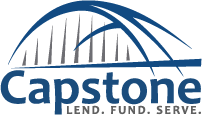Fix & Flip Loans for Beginners: How to Plan for Approval
What are the basic documents and plans to provide with your application for your first fix and flip loan? What are the common mistakes for new investors?
According to a report from Attom Data Solutions, about 43% of all flipped homes were financed by the investor. First-time investors usually don’t buy a fixer-upper with cash.
So, what kind of loan is best for a beginner wanting to fix and flip?
You’ll get the best rates with a conventional loan (Fannie Mae and Freddie Mac) – but you need a good credit score and you’ll have to wait an average of one month before it closes. You can also go for an FHA loan with a low down payment requirement – but again, credit score and wait times are a factor, along with stringent FHA home inspections that won’t even allow you to buy many distressed homes. That means you’ll take a hit to your profit margins.
The alternative is a hard money loan. Hard money lenders, like Capstone, aren’t requiring a minimum credit score and they’ll close in as fast as seven days. The downside is higher interest rates, but the upside is accessibility to a fast loan for even the most distressed properties. And that can result in serious profit for you as a new fix and flip investor.
Check out Capstone’s fix-and-flip loan terms.
Are you truly ready for your first fix and flip project?
Photo by Remodelista
Most hard money lenders will require a down payment ranging from 10% to 25% of the purchase price. In addition to this, you should have reserves to cover any unforeseen expenses. A good rule of thumb is to have at least six months'-worth of holding costs—such as taxes, insurance, and utilities—set aside.
You need a mentor or a guide. First-time flippers often partner with more experienced investors to not only strengthen their application with a lender, but to navigate the project. Attom Data reports the average gross profit on a flip as $65,000 (which is exciting!), but profits can be much lower—or even turn into losses—if the project goes off track due to inexperience.
Capstone Capital Partners accepts first-time flippers. If you can demonstrate a well-prepared plan on a small project, we’d love to talk!
Are you familiar enough with the local area you’re flipping in? Conduct thorough market research to ensure the property's after-repair value (ARV) justifies the purchase and rehab costs. Your lender will evaluate this too, so it’s not entirely up to you – that’s good news for beginners in the fix-and-flip scene.
What a new investor should be prepared with for their first fix-and-flip loan application
Property information. This should include an appraisal and a thorough description of the property’s current condition. Lenders will want to know you understand the scope of work.
Financial documentation. Be prepared to provide proof of funds, such as bank statements showing that you have the necessary down payment and reserves. Have a rehabilitation budget that outlines labor, materials, and a realistic timeline for completion. Back up your cost estimates by providing actual quotes from contractors or comparable project costs.
Basic market analysis. Provide a list of recent comparable sales (“comps”) in the immediate area that support your estimated ARV. Along with comps, be ready to discuss the local real estate market, including current demand, average days on market, and recent sales trends. This demonstrates your understanding of the market and your confidence in the property's potential.
Exit Strategy. Whether you plan to sell the property or refinance it, you should be able to explain how you’ll repay the hard money (aka “bridge”) loan. If refinancing, ensure you can meet the criteria for your next mortgage.
Overwhelmed with financing your first fix and flip? Skip straight to real human help. Tell us a little about yourself and we’ll help organize your application!
Two common mistakes for new investors on the fix-and-flip scene
Photo by Don Shall
Even if you’re well-prepared, there are common pitfalls that can derail your loan approval. One major mistake is overestimating the ARV. Lenders are conservative and prefer that you are too.
Inflated ARV estimates can lead to over-borrowing and potential financial strain if the property doesn’t sell for as much as you anticipated. Similarly, underestimating rehab costs is a common error. It’s wise to add a buffer to your budget to cover unexpected expenses that often arise during renovations. However, an experienced lender should protect you against this situation!
Another mistake is going over your timeline. Markets shift (along with interest rates), delays happen, contractors quit, supply chain issues arise, inclement weather moves in, and the list goes on. You can’t foresee or prevent these things sometimes. The median time to flip a home in the U.S. is about six months, according to the National Association of Realtors. should pad your loan term for a bit longer than your estimated timeline – especially for first-timers getting a loan for a fix-and-flip.
Capstone Capital Partners is the friendly, experienced fix and flip lender a beginner really needs
Ready to get started on your first fix & flip? Capstone Lending specializes in providing hard money loans tailored for real estate investors in the great state of Texas. Our flexible terms and fast approval process can help you secure the financing you need to make your next project a success. Contact us today to learn more and get your application started!


